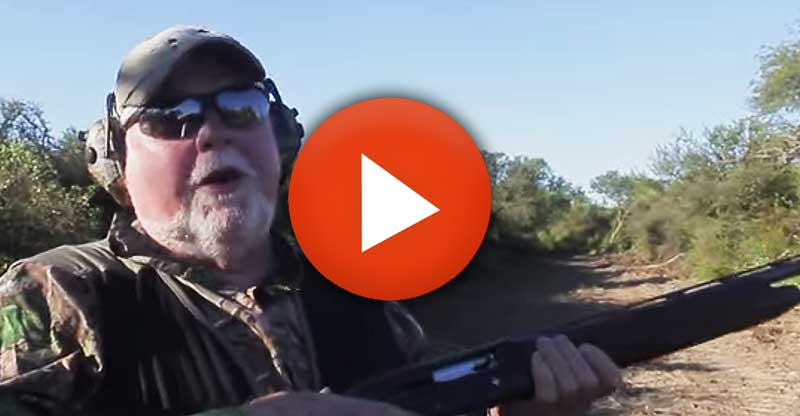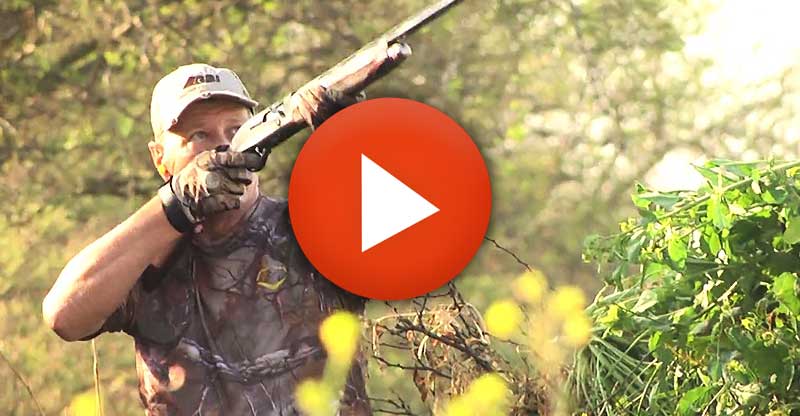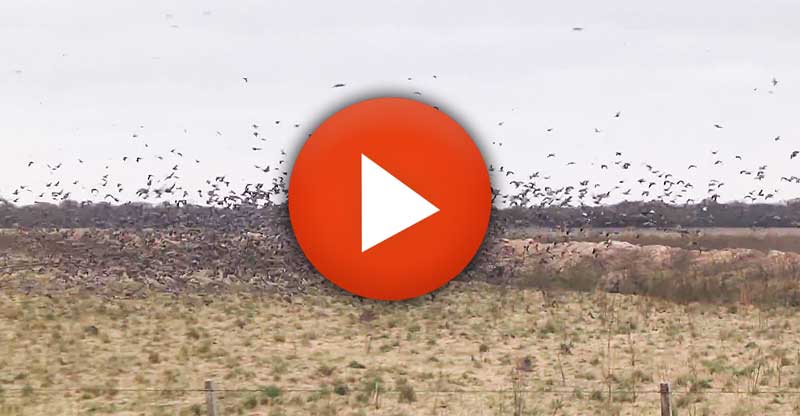A trip to Argentina is the cure for frustrated duck hunters
By Ken Perrotte
IF VIRGINIA’S SWELTERING summer heat and humidity tend to get you down, cool down by heading south–way south. It is winter in Argentina, and while temperatures may be cooler, the wingshooting in this large South American country heats up any morning.
Three things drove me to punch this ticket: 20-plus years of reading about Argentina’s incredible waterfowl, dove and perdiz (partridge) hunting; last year’s unbelievably lousy Virginia waterfowl hunting season; and wondering what a ballyhooed bird flu pandemic might do to opportunities to travel to wingshooting destinations.
Many Virginians, including some from the greater Fredericksburg region make frequent pilgrimages to the southern hemisphere for Argentina dove hunting. I have never had an inclination to shoot up to 1,000 birds a day, nor do my shoulder or wallet desire the pounding they would take from firing and buying about 50-100 boxes of shot shells a day. However, the opportunity to take up to 30 ducks in a morning’s hunt followed by an afternoon of perdiz hunting over pointers seemed action aplenty for a three-day adventure.
The overnight flight from Atlanta to Buenos Aires took about nine hours. We arrived in Argentina wondering if the country was deserted. It turns out Argentina was playing the Netherlands in the World Cup soccer tournament in Germany that day and, with minimal exceptions, not much moves when futbol is on a television screen.
Late-June temperatures were unseasonably high for the Argentine winter, with morning lows around 60 degrees and afternoon highs pushing 80.
“Blue-birdy” days like this in Virginia almost guarantee you’re better off grabbing a fishing pole instead of duck hunting. To Martin Azar, our English-speaking host from J.J. Cacerias Hunting, the conditions were, indeed, less than favorable, and he seemed worried hunting could be a little slow. His ideal Argentina winter morning has temperatures in the low 40s with a little overcast and slight breeze.
We were based out of La Morena Lodge, near Esquina in the Corrientes Province of Argentina. Esquina’s southern latitude almost mirrors the northern positions of Houston or Austin, albeit considerably more easterly. The area does resemble south Texas or what I would imagine Southwest Louisiana would look like if extended another hundred miles or so into the Gulf of Mexico.
The communities and countryside seem akin to many parts of Mexico. Cattle and horses are everywhere, seemingly roaming free along dirt roads or in flooded pastures and drainages, often nuzzling beneath the watery pastures for juicy food.
Guides Orlando Zarate and Lali Lopez spoke little English and I little Spanish, but we seemed to get by. Both men enjoyed drinking warm herbal “mate” through a metal straw with a strainer at the end. They said the drink, similar to a tea, gave them an energy boost.
They load duck decoys, all the morning’s shotgun shells, a machete and fresh greenery limbs for the day’s blind on their body for the pre-dawn walk in chest-waders toward the lagoon or lake where the hunt will occur. Blinds are often constructed daily.
Up to 11 different species of ducks were available. We bagged a mix of birds the first day as we hunted near Arroyo Sarandicito. We took teal–primarily beautiful silver and ringed teal (locally called cappuchino and Franciscano, respectively)–and Brazilian ducks with bright red legs and bills and brilliant, iridescent green atop their wings.
Rosy-billed pochards, big ducks related to the canvasback family and about the size of mallards, provided most daily shooting opportunities. Prized for their table quality, this species’ drakes are mostly black and white with a prominent rose-colored bill. Hens are a sandy brown.
We hunted a different area each day. Besides teal and rosy-bills, I took one pair of a beautiful bird called a white-faced tree duck, a unique-looking bird with shimmering hues of rust, bronze and copper in its feathers and a unique band of white around its head.
Both Lopez and Zarate carry several calls, including a teal whistle and a call similar to one used for mallards. To reach out to rosy-bills, though, they use their mouth, executing a loud, tongue-vibrating deep sound like a “gggrrrrr, ggrrrrr” or “llllrrrr” against the back of their teeth. By day three, I was trying the call myself.
Dozens of empty red shot shells bobbed in the water at our feet while downed birds floated all around us outside our tight blind of freshly cut greenery. The guides don’t use dogs; there’d be no time and the water is typically very shallow.
For a usually frustrated North American Atlantic Flyway duck hunter, the target-rich environment spurred a near constant adrenaline high. I recall Orlando dumping 12-gauge shells into my jacket while telling me, “Tranquilo. Tranquilo, amigo.”
“Relax. Be patient,” he was saying. Prudent advice, but relaxing came difficult when more patos (Spanish for ducks) than I’d ever seen were pouring into the small, shallow lake where we were hiding.
Azar said we saw an average number of birds on the hunt. We rated collecting 25-30 ducks each morning as a tad higher than average. Rarely did more than a few minutes pass without seeing ducks and there were at least two 30-minute windows during the typical two-hour hunt where shooting opportunities were phenomenal. Azar noted he annually hosted some professional shooters from Italy who often limit out within 30 minutes.
The ducks are put to good use. Late in each morning’s duck hunt, it wasn’t unusual to see a gaucho (the Argentine term for a cowboy) arrive on horseback to watch the action. Usually a few birds were left with these ranch hands. Lopez also stopped at various dwellings near the ranches, sharing the day’s bounty with families of meager means.
Along with great memories of a fantastic hunt, we brought several ducks home–some destined for the smoker, some for the taxidermist.
Next week: Perdiz hunting and Argentina trip tips.
KEN PERROTTE can be reached at The Free Lance-Star, 616 Amelia Street, Fredericksburg, Va. 22401; by fax at  373-8455 ; or e-mail at
373-8455 ; or e-mail at
Email: outdoors@freelancestar.com.
Date published: 8/24/2006
Source: http://fredericksburg.com

Dove hunting testimonies

Amazing hunting
The ultimate hunting country
By Svend Aage Buus Translation of an article in a Danish magazine HUNTING IN ARGENTINA Let hunting begin! Photograph: Lodge in Cordoba for dove hunting I have realized my dream of going hunting to South America several times. Shooting at a puma in an open course in...
Tips for an Argentine bird hunting trip
Note: Last week, we reported on Argentina’s fantastic waterfowl hunting. Today, we look at perdiz hunting, an often secondary component of a South American doubleheader, and offer a few suggestions for making a trip. ARGENTINA IS NO secret when it comes to fabulous...
A trip to Argentina is the cure for frustrated duck hunters
By Ken Perrotte IF VIRGINIA'S SWELTERING summer heat and humidity tend to get you down, cool down by heading south--way south. It is winter in Argentina, and while temperatures may be cooler, the wingshooting in this large South American country heats up any morning....

Dove hunting with JJ Caceria

Amazing dove hunting in Argentina record 11 years old
Why Santa RosaGot To Have The Largest Population of Doves in The World
By Jose Luis Grasso. Before referring to Dove hunting in Argentina, I’d like to explain why millions of eared doves live on a permanent basis in the province of Cordoba. About 25 years ago, 80% of Cordoba land was covered with woodlands full of native trees from the...
